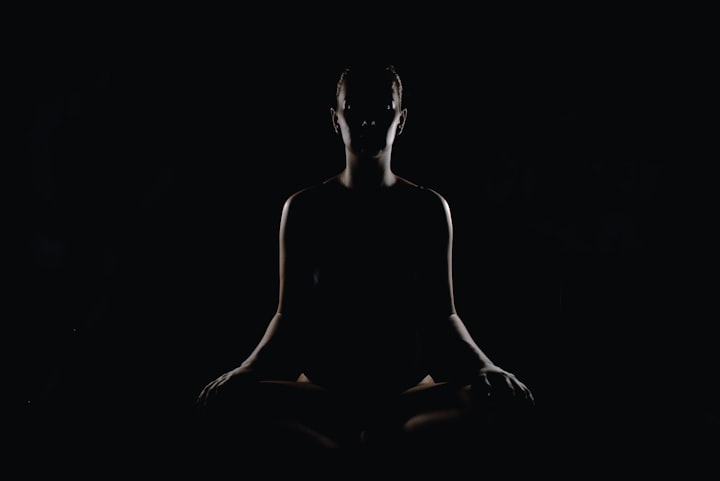Insights from 10 Days of Silent Vipassana Meditation
100 hours of insanity followed by a morsel of peace — here’s what I learned
The world doesn’t need more noise. It doesn’t need more puffed-out chests, swinging dicks, or bulging biceps either.
But what happens when all the noise stops and all the dicks stop swinging? What then?
That’s what I (unintentionally) found out during my 10 days of silent meditation.
Before I get more into what happened…
Imagine for a moment:
No talking. No phones. No technology. No working out. No stretching. No music. No art. No writing. No stealing. No killing (including flies!). No lying. No drugs. No alcohol. No smoking. No masturbating. No sex. No eye-contact.
Even moving isn’t recommended.
I mean, who signs up for that shit?
Well, me. And weirdly lots of other people.
Silence is excruciatingly loud… until it’s not
My ten days of silence began with a slow spiral into insanity before a glimmer of hope called peace inspired me to continue. And from then on, it was a rather beautiful journey.
“When you can bare your own silence, you are free” — Mooji
However, up until that point, it was hard to focus because the noise was fricking loud.
To be heard in the world I thought I needed to be faster, stronger, better, and louder than my loving neighbour who also thought the same, so that’s often how I unconsciously acted.
So, even though everything ground to a halt… my internal voice continued to shout at me but it was louder than ever before. And at times, it was almost unbearable.
The big difference though was that instead of it being directed outwardly towards others, I had turned on myself. And instead of finding blame and frustration in the world around me, I had 30 years of content to blame myself for.
I never knew just how harsh I could be on myself until I was left alone with myself for 10 days.
It was heartbreaking.
Micheal A. Singer calls this voice our inner roommate. Others have called it the monkey mind. Either way, I found that if it’s left to its own devices it can (and will) run riot.
I didn’t know that at the time, though, so this persistent shape-shifting deceptive ninja caught me off guard every time. It took me until around about day 8 to see that there is a world beneath the noise. A place so calm and peaceful that it felt almost mystical.
“Everything changes once we identify with being the witness to the story, instead of the actor in it” — Ram Dass
Boy was this true during my 10 days of silence. Once my inner roommate was observed and witnessed from afar, it didn’t bother me half as much because it was no longer personal. After all, I am the one seeing the maniac at work who is the maniac?
That was a huge breakthrough for me.
“There is a presence, a silence, a stillness which is here by itself. There is no doer of it, no creator of this stillness. It is simply here in you, with you. It is the fragrance of your own self” — Mooji
It’s not always sexy but it’s real
Accompanying the many life lessons I learned during my 10 days of Vipassana meditation, one of the most profound came from my ability to withstand pain.
My pain threshold grew exponentially. However, it wasn’t from enduring more pain necessarily but from learning how not to crave or desire for my pain to be any different. And as soon as I could accept physical, emotional, and spiritual pain within myself, it kind of dissolved.
That’s when I came to understand Tony Robbins’ message more deeply:
“Pain is a part of life but suffering is optional”
Our primal instincts
Us humans are hard-wired for pleasure and survival. Evolution is designed to first survive and second procreate. So, we can’t fight these biochemical impulses. All we can control is how we respond thereafter.
That’s where Vipassana meditation comes into the picture because its main purpose is to transcend cravings and aversions through the simple act of watching sensations in the body without attaching to any that arise.
Now, I know that sounds simple but it’s the hardest thing I’ve ever had to do. But here’s the thing: In those glorious moments when my mind was still and I felt equanimous and neutral to pain and pleasure alike, I could see that what lies beyond my eternal cravings and aversions is simply sensations in the body. And that sensations are all that we are.
The tricky thing though is that when we attach a story to those sensations and then those sensations start creating the thoughts that we think, the emotions that we feel, and the actions that we take. And as our thoughts, feelings, and actions become who we are, we unintentionally become our sensations.
However, when sensations in the body stop dominating and influencing the way we feel, everything changes. Or at least it did for me, anyway.
Suddenly, I found a great curiosity about what sensations are. I even found myself welcoming them in like, “oh wonderful. Here’s anger. What does anger feel like?” Or, “oh lovely. He’s that pain in my shoulder again. What exactly is it? Where is it? What sensations can I feel?”
It was a far cry from feeling angry and frustrated, that was for sure!
It was like a silent superpower instead. I could be sitting down, sweating my ass off, and enjoying it.
When it’s all about sensations it doesn’t matter what they are as they can all become a great sense of interest. Heat, cold, numbness, anxiety, shame, anger, sadness, joy, and everything in between becomes equally accepted. And often in the scrutiny of each sensation, they become less personal and more universal. And that’s when the fun really begins!
Where I am with the practice today
I’m not gonna lie and say I’ve kept up with the practice because I haven’t. But what I appreciate is that it never really leaves. So, now, whenever I’m in a difficult situation or feeling challenged, I lean on my experiences and go into the sensations.
And it can be anything — feeling pain or exhaustion while running, holding an extra long yoga pose, learning to box, sitting on a cramped bus full of sweaty people, listening to a baby crying, having a difficult conversation, waking up from a bad night’s sleep, or feeling insecure in public spaces. It doesn’t matter what it is, I simply become curious about the moment instead of it crippling me like it did in the past.
I sit behind the voice and observe the mind and body in life. I become curious instead of attached and the need for things to change loosens up as I enjoy what pain, exhaustion, sweaty, loud, and uncomfortable feels like.
I know that might sound sadistic to you but (for me, at least) it trumps feeling angry, annoyed, and frustrated every single time. And it hasn’t let me down yet.
A wonderful daily practice to consider
A wonderful exercise to consider here is the practice of 50/50.
It works on the principle that both our internal environment and our external experience are of equal importance as both combine to make up our perception of reality. So, tracking both helps to provide a wholesome version of reality as it unfolds from moment to moment.
Our external experience might be a conversation we’re having with a friend or a task we’re completing at work. Our inside environment might be observing an emotion, sensation, or thought that arises in the body without attachment.
Whatever it might be, the goal is to keep 50% of our awareness on both worlds simultaneously.
This has been a wonderful mindfulness practice that’s brought Vipassana into my daily life.
About the Creator
Andy Murphy
Writer & Soma Breath faciliatator







Comments
There are no comments for this story
Be the first to respond and start the conversation.